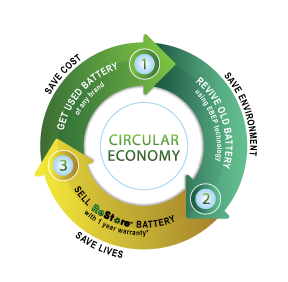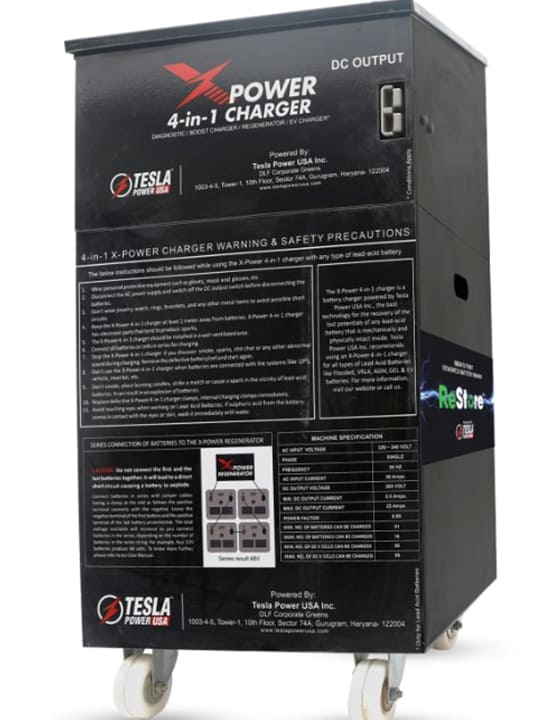February 21, 2024 By Admin
Green Tech Revolution - The Environmental Impact of Battery Refurbishment
In recent decades, the world has experienced a concerning increase in CO2 emissions due to heavy reliance on fossil fuels. This has led to severe ecological consequences such as irregular temperature changes, geographical shifts, and the melting of polar ice. There has been a global push towards sustainable solutions or the Green Tech Revolution to solve these issues, specifically focusing on battery technology advancements. India, in particular, has emerged as a proactive player in aligning with critical environmental concerns.
A Green Tech Revolution focuses on minimizing waste and maximizing the value derived from battery materials, aiming to alleviate the strain on our planet's resources. To ensure the productivity and continuous circulation of batteries, components, and resources, engineering practices prioritizing longevity, reuse, remanufacturing, and rejuvenation play an important role.
People prefer using Lead-acid and lithium-ion batteries in various applications. However, many discarded lithium-ion batteries end up in landfills, contributing to environmental degradation. On the other hand, Lead-acid batteries offer a more environmentally advantageous option due to their higher rejuvenation rates and potential for reuse. Lead-acid batteries are essential in reducing e-waste and promoting the Green Tech Revolution.
One of the notable applications of Green Tech Revolution principles involves the revival of old lead-acid batteries through a charging process or Battery Refurbishment. This sustainable practice not only extends the lifespan of batteries but also contributes to environmental conservation by avoiding pollution.
The economic benefits of battery rejuvenation are significant. Refurbished batteries can save costs by utilizing existing resources and reducing the need for sourcing, refining, and shipping new components. The environmental impact of battery manufacturing is also greatly reduced by rejuvenating battery waste, reducing the demand for new battery production and its associated greenhouse gas emissions.
Furthermore, Lead-acid battery rejuvenation plays a crucial role in employment generation by creating job opportunities in recovering, transporting, processing, and recuperating valuable materials from end-of-life batteries. This supports the local economy and fortifies economic resilience at both local and broader levels.
While lithium-ion and advanced battery technologies promise a greener future, they come with unique challenges, such as rare metal mining and complex material recycling. Lead-acid battery rejuvenation presents itself as a sustainable bridge, maximizing the efficiency of existing battery infrastructure while minimizing waste and environmental impact.
Lead-acid battery rejuvenation is particularly crucial in regions where new battery adoption faces constraints. It offers a practical, eco-friendly, and cost-effective solution for extending the lifespan of batteries and reducing dependence on fossil fuels. This process also facilitates electrification efforts in rural and urban areas, accelerating the transition towards renewable energy sources.
Embracing a Green Tech Revolution is vital in addressing the alarming increase in CO2 emissions and environmental degradation caused by heavy reliance on fossil fuels. Battery rejuvenation, particularly in the context of Lead-acid batteries, offers significant environmental and economic benefits. By extending the lifespan of batteries, reducing waste, and promoting reuse, we can contribute to more sustainable and responsible use of energy storage technologies. With its proactive commitment to environmental goals, India can become a model for other countries in advancing battery technologies and embracing a circular economy, ultimately paving the way for a greener future.






